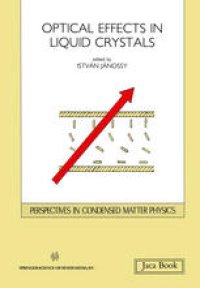
Ebook: Opticals Effects in Liquid Crystals
- Tags: Condensed Matter Physics, Optics Optoelectronics Plasmonics and Optical Devices
- Series: Perspectives in Condensed Matter Physics 5
- Year: 1991
- Publisher: Springer Netherlands
- Edition: 1
- Language: English
- pdf
In 1988 physicists and chemists commemorated the centenary of the discovery of the first liquid crystals. Fora long period after this discovery, although many significant results were found, liquid crystal research remained a marginal topic of condensed matter physics. The situation changed in the sixties. At that time the remarkable electro-optical properties of liquid crystals were recognized and found soon widespread application in numeric displays. From a more fundamental point of view, the interest in disordered systems. increased in general at the same time. Liquid crystals represented an important dass of such systems. Among others, phase transitions, hydrodynamics and topological defects occurring in them attracted considerable attention. The connection between the liquid-crystalline state and the structure of biological membranes stimulated a Iot of works also. In the present volume we discuss a relatively new and rapidly developing branch of the fi. eld, namely nonlinear optical effects in liquid crystals. Optical studies have always played a signifi. cant role in liquid crystal science. Research of optical nonlinearities in liquid crystals began at the end of the sixties. Since then it became a powerful tool in the investigation of symmetry properties, interfacial phenomena or dynamic behaviour. Furthermore, several new aspects of nonlinear processes were demonstrated and studied extensively in liquid crystals. The subject covered in this book is therefore of importance both for liquid crystal research and for nonlinear optics itself. The term "nonlinear optics" is used here in a broad sense.